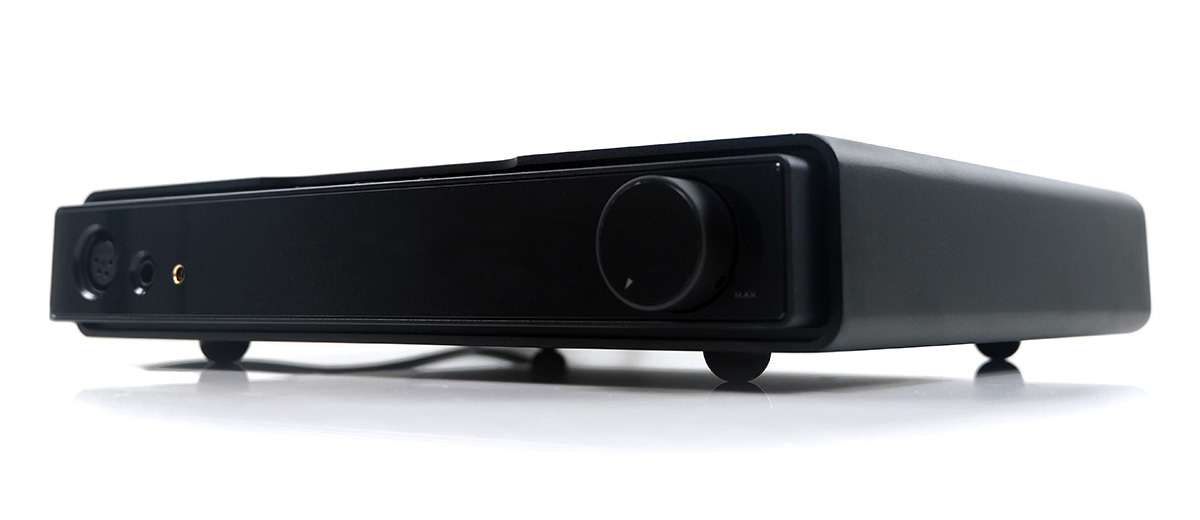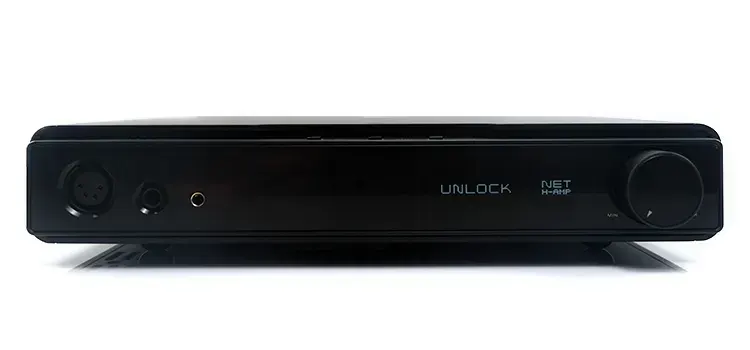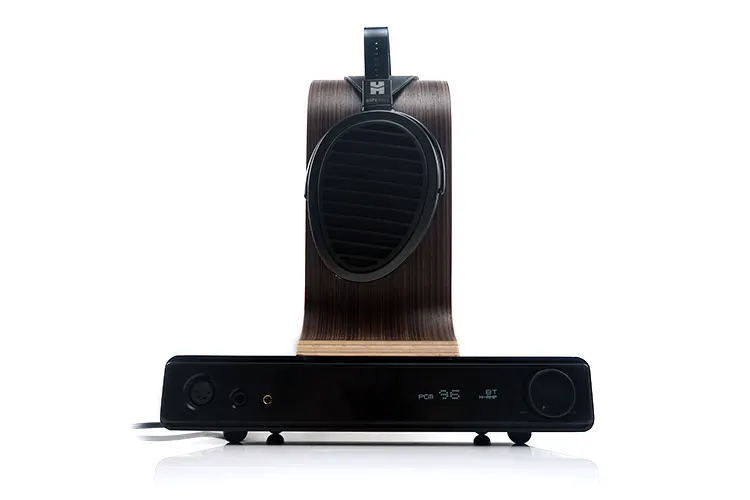Sound Impressions
The following sound impressions of the HIFIMAN Serenade were completed using a HIFIMAN HE1000 V2 and Meze Audio’s Empyrean II combined with a mixture of USB-DAC and LAN streaming lossless audio tracks.
Summary
The Serenade knows its old-school well. This is a rich and smooth tonal signature with some excellent body through the mids of our paired headphones and a liquid-like treble tone.
The staging is wide, atmospheric, and grandiose to a certain extent. It is a presentation that does well at filling out the potential space and air from some of my older HIFIMAN headphones such as the HE1000 V2.
At times I thought the Serenade was tailor-made for headphones of this type in terms of coloration. The HE1000 V2 can be picky with its feisty set of highs. At times I found some of the drier solid-state amps and delta-sigma DACs too harsh a pairing. Not here, not with the Serenade.
You also get plenty of headroom with the HE1000V2 and similarly inefficient headphones such as the Arya Stealth Magnet Version. Even the Susvara isn’t that challenging either in terms of volume levels though its articulating prowess is better served with the Prelude on the Serenade’s DAC out.
All that is lacking from the Serenade amplifier is the Prelude’s tightness and dynamic prowess on the lows giving off more of a relaxed SETA amplifier-style presentation with less cut and thrust and more of an enveloping fulsome bass response.
Is it the most resolving amplifier? Arguably not, but then again I am comparing it to the mighty Prelude which costs a lot more, as well as some delta-sigma alternatives that give up a degree of tonal harmony in a quest for precision.
The Serenade is more of an emotional tug and hence my old-school reference right at the beginning. It has a degree of softness in note leading edges and slightly lengthy decay on some instrumental plucks that some competing amps. But, oh man, those vocal performances are gorgeous with such a richly textured delivery.
Timbre
The Serenade delivers a relaxing quality to both instrument and vocal alike. It has this embracing vibe with a fulsome but slightly languid bass delivery, nicely textured ‘big’ sounding vocals, and sparkle without harshness in the performance of our tested headphones highs.
One salient difference worth noting was the difference between the USB audio and LAN. I am sure this one will be debated but for my tastes, I preferred the LAN performance.
The are some staging differences that I will highlight in the next section but for coloration, I felt the LAN Serenade treble has a more refined tone and is not quite as aggressive through the upper mids and lower treble as USB.
Some might equate that with ‘more energy’ and bite in the percussion but for headphones that already are energetic such as the Arya Stealth Magnet Version, I felt the more serene tonal quality of the Serenade output was less fatiguing.
Headphones such as the aforementioned HE1000 V2, (and the V1 for that matter), and the Meze Audio Empyrean II sounded delightfully smooth without any sense that there was a heavy degree of attenuation to achieve that tuning.
In fact, when comparing the FiiO K9 Pro ESS, an amplifier that I described as very neutral and clean sounding, I felt the Serenade had more air and treble extension when comparing the two using the Empyrean II.
I might shy away from already relaxed and warm-sounding headphones which are heavier on the mid-bass bloom with the Serenade. The likes of the ZMF Headphones Atrium sounded a little too rounded and dreamy through the upper bass and mids despite the Serenade doing an excellent job with the Atrium’s excellent staging capability.
Staging & Dynamics
The Serenade projects excellent width and sounds relatively airy, filling out headphones with large staging qualities with ease.
It is, however, more of a relaxed presentation and not as upfront and clinical as something like the FiiO K9 Pro ESS. The FiiO offers more robustness on the lows giving it an edge in depth and aggression but perhaps not as wide and tall as the sweeter more atmospheric tone of the Serenade.
The Serenade also does better than the likes of the Shanling EM5 in teasing out the entire stage, both backing instrument and main vocal. Vocals still have excellent presence but the better width and height give instruments more space and as such a more complete picture of the performance.
Where it might be lacking is urgency in the lows combined with a softish dynamic impact in its delivery. Some of the delta-sigma amp/DACs we compared the Serenade with offered a more robust and physical experience with our paired headphones.
The dynamics and level of resolution of the Serenade are also a step down from the Prelude. If you are looking for an amp with ‘drive’ and excellent dynamics the slightly softish presentation of the Serenade might appeal a bit less.
However, none of the compared similar-tier amps could deliver quite the same spacious midrange presentation from the Serenade.
This is why I would pick this performance over the others with headphones known for casting a huge soundstage. If mids are your thing, and they are mine, then the Serenade delivers them with more confidence and presence.
Synergy
LAN Streaming
When integrated into a LAN network, the Serenade is an accessible endpoint for audio output on most LAN-compatible audio software platforms. I had no issues hooking it up and finding it right away in ROON alongside its USB connection.
One thing to note, going LAN will open up the Serenade’s higher-tier DSD512 and PCM 768kHz decoding capability, something which is not possible via its USB connection.
However, in doing so that will place a great strain on your network’s capabilities to deliver stutter-free audio. The better the bandwidth of your network the smoother the performance from the Serenade’s LAN audio output.
For example, I could easily stream up to DSD256 via my LAN setup without any issues. However, once I started rolling with some DSD512 from Yuko Mabuchi’s Plays Miles Davis samplers I got about 10-15 seconds into the recording before the buffer ran out, even when set to the maximum 500ms in ROON.
That ‘roadblock’ so to speak is more indicative of my LAN network capabilities than any indication that the Serenade has an issue with hi-res tracks on LAN so my advice is to check your LAN capabilities before plugging in the Serenade if you plan on trying out DSD512.
For everything else, you are in for a treat because the LAN performance is excellent. At least for my tastes, I found myself gravitating more toward the LAN performance over USB.
Using a HIFIMAN HE1000 V2 on the Serenade’s balanced output, the timing felt a little bit better for the same audio delivered via LAN over ROON compared to USB.
The staging also offered a slightly blacker background whereas USB sounded more lively but not as holographic. The treble overtone and presence were also slightly stronger on USB compared to LAN.
Efficiency & Sensitivity
The Serenade generally does well with IEMs though channel balancing is uneven for low volume with monitors we tested. It is also missing the Prelude‘s gain control which I think might have been useful for IEMs as the amount of useable volume is not huge.
With sensitive IEMs like the Campfire Audio Andromeda 2020, you might pick up a bit of background hiss but it’s a lot less than I was expecting. Less sensitive options like the 64 Audio Trio and the Noble Audio Viking Ragnar produce a blacker background with the Serenade and noise wasn’t a factor.
The smooth coloration of the Serenade excels with the Ragnar and Trio’s peppy treble tuning. I have heard them a lot sharper on other DAPs and amplifiers and this is one of the more agreeable desktop combinations I have heard to date.
I suspect those with brighter IEMs will find the Serenade pairing a nice counter to any shrill-sounding recordings.
On the other side of the scale, the Serenade can drive the Susvara with no useable volume headroom issues for its challengingly low sensitivity level.
The Serenade amplifier is not as dynamic or as insightful sounding as the Serenade DAC line-out to the Prelude. That’s a tough ask given the extremely high standards it sets at around 6W into 60Ω for the Susvara compared to roughly around 2.1W with the Serenade into the same load.
However, you do get a euphonic and buttery smooth performance with some excellent staging width when paired with the Susvara, more so with the Serenade’s LAN output.
Balanced is also the way to go with demanding headphones. The Arya Stealth Magnet Version SE output sounded softer, less dynamic on the lows, and with a slightly shrunken soundstage compared to the Serenade’s balanced output.
Headphone Pairings
The Serenade is a bit of a gift for headphones that tend to have a treble-centric tuning over more to the clean side, especially if you are looking to smooth that performance out a bit or looking for an amplifier that is less clinical.
On the flip side, it’s a little too smooth for headphones that are already quite warm and smooth and I preferred headphones that offer a fairly large soundstage when pairing with the Serenade.
On point 1 for example, the Serenade is a great pairing with HIFIMAN’s lineup of headphones such as the Arya Stealth Magnet Version and the HE1000 V2. These are two headphones whose top-ends require a little bit of studied approach for amp/DAC pairings.
Like the IEM matchups, the Serenade’s wetter tone and wide staging sound countered the clean sparkling tones of those two HIFIMAN headphones. There is no reduction in extension, rather the leading edges are a little softer with a nice fulsome and slightly warmish tone through the mids.
Also, there is no issue with headroom, though the dynamics of the lows are a shade softer and not as impactful as some of the competing units we compared to on page 3 of this review.
The available dynamic range and somewhat languid pace of the Serenade might hold back some Susvara owners. It sounds very lush and forgiving and does fill the stage quite nicely but it’s more optimal on the likes of the Prelude which is more precise and resolving for complex detailed musical passages.
Point 2 might be a personal preference but the likes of the ZMF Headphones Atrium sounded overly rounded with the Serenade. It filled the soundstage nicely with good weight but the notes lacked bite and clarity compared to more neutral amplifiers.





